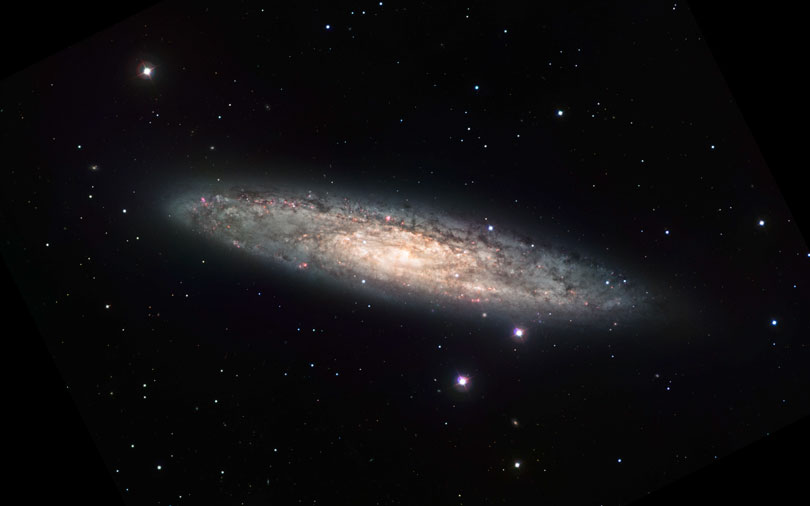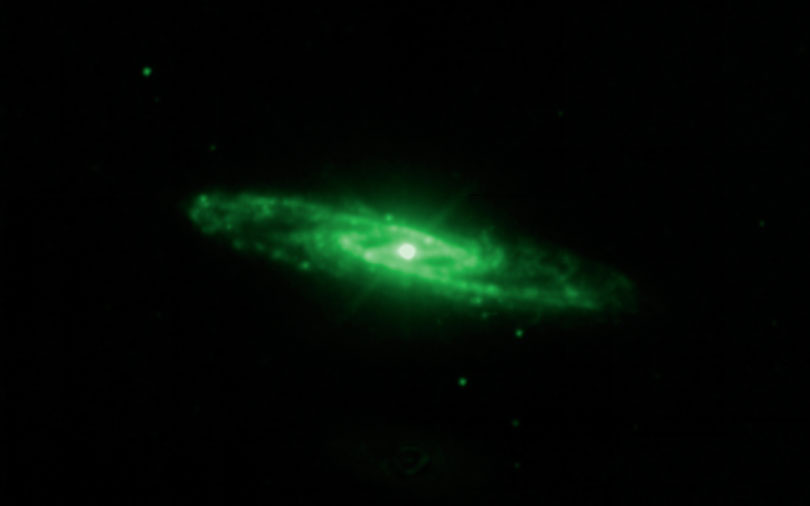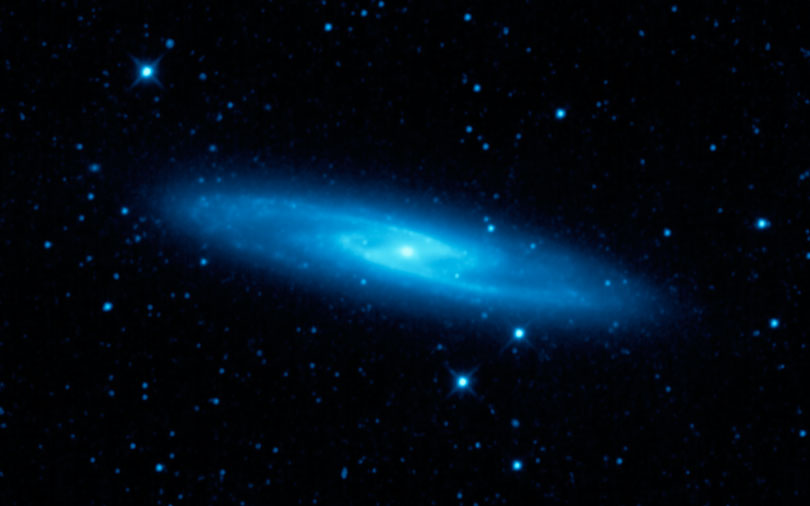- GALAXIES
- INFRARED WORLD
- INTERACTING GALAXIES
- MILKY WAY
- STAR BIRTH
- STAR DEATH
- GALAXIES
- INFRARED WORLD
- INTERACTING GALAXIES
- MILKY WAY
- STAR BIRTH
- STAR DEATH
Galaxies
Barred Galaxy NGC 253



Visible:
Default View
Mid Infrared:
LESS
MORE
Near Infrared:
LESS
MORE
Barred Galaxy NGC 253
Infrared light can be critical for viewing the underlying structure of a galaxy. In NGC 253, the visible-light view is complicated by the viewing angle, dark dust clouds, and scatterings of massive stars. Switching to the near-infrared lets us see the full population of stars more clearly, revealing a bar running through the center of the galaxy. Including mid-infrared also brings out the dust lanes clearly, and even highlights the areas where stars are forming vigorously, particularly in the galaxy's center.
Visible:
Dust and bright stars confuse the view in visible light.
Mid Infrared:
The base population of stars reveal the spiral arms and central bar.
Near Infrared:
Dust lanes along the spiral arms glow in the mid-infrared.
CREDITS:
Visible: ESO. Near-infrared: NASA/JPL-Caltech/UCLA. Mid-infrared: NASA/JPL-Caltech/UCLA.